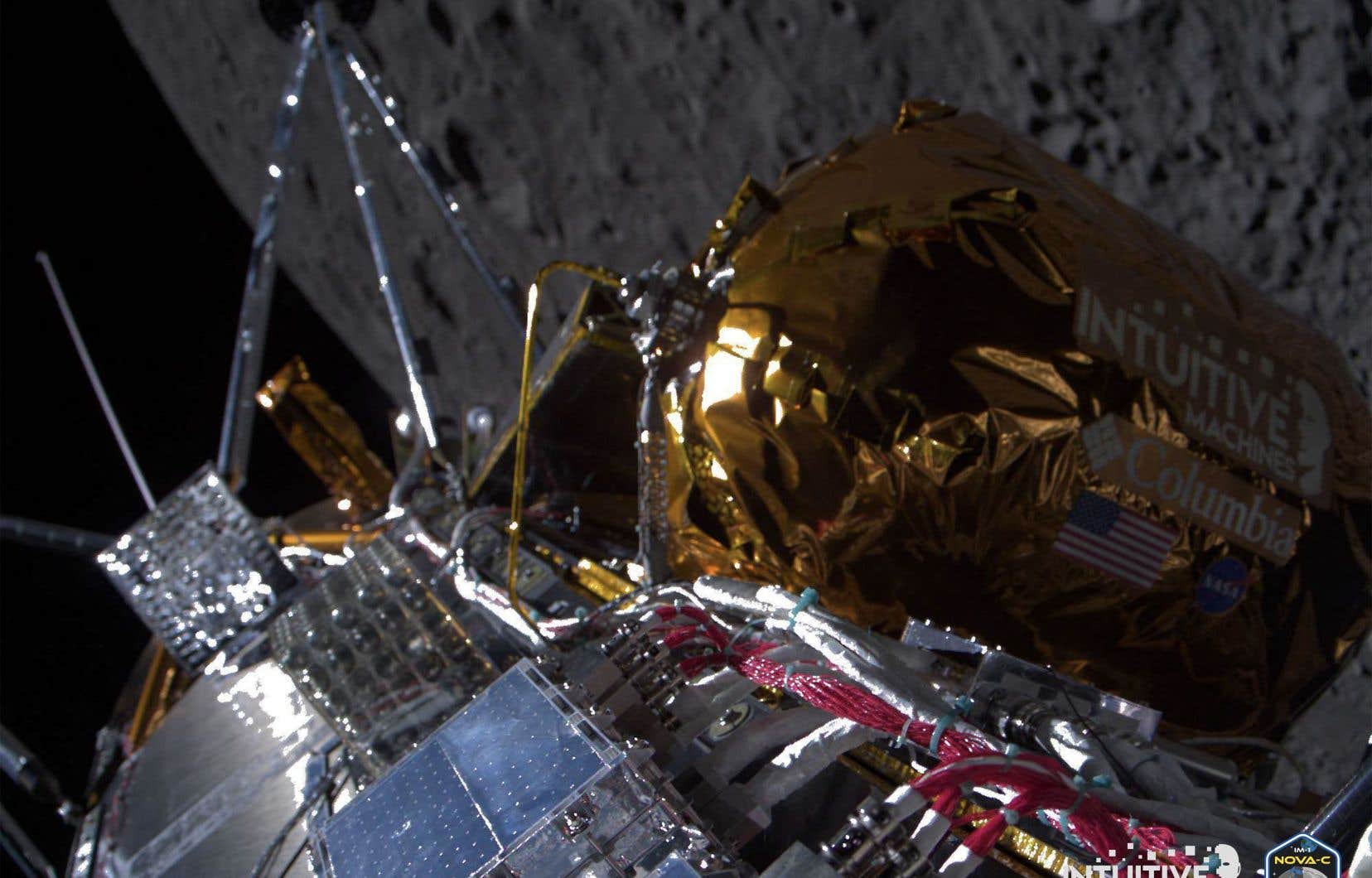A probe from the American company Intuitive Machines landed on the Moon on Thursday and transmitted a signal, a first for a private company, and the first landing of an American device in more than 50 years.
The signal received, however, was weak and the status of the lander was not immediately completely clear.
“We can confirm without a doubt that our equipment is on the surface of the Moon, and that we are transmitting” a signal, Tim Crain, manager at Intuitive Machines, said during the company’s live video.
The planned time of the moon landing took place at 5:23 p.m. Houston time, Texas, where the company’s control room is located (6:23 p.m. in Quebec).
The Nova-C lander, which notably carries NASA scientific instruments, measures a little over four meters high. It took off last week from Florida and entered lunar orbit on Wednesday.
The dreaded descent took about an hour.
Lasers on the lander which would normally allow the device to guide itself did not work, but the Intuitive Machines teams were able to use as a replacement a NASA instrument on board, which was only to be tested during the mission.
About ten minutes before the moment of landing, a significant thrust from the engine served to brake Nova-C, preparing it for its final descent, vertically from an altitude of 30 meters. The lander was then completely autonomous.
It is at this moment that a small machine equipped with cameras, developed by the Embry-Riddle Aeronautical University, will be ejected from the moon to capture the big moment from the outside.
Nova-C must reduce its speed from 1,800 meters per second to one meter per second by the time its six feet touch the ground.
This is the first landing of an American probe on the Moon since the end of the legendary Apollo program in 1972.
India and Japan recently managed to land there thanks to their national space agencies, becoming the fourth and fifth countries to do so, after the Soviet Union, the United States and China.
But several companies – Israeli, Japanese and American – have so far failed to reproduce the same feat.
Russia also missed a moon landing this summer.
Lunar South Pole
The location that Intuitive Machines was targeting is about 300 kilometers from the South Pole of the Moon. The crater which is to act as a landing strip is named Malapert A, after a 17th century astronomer.
The lunar South Pole is of interest because there is water there in the form of ice, which could be exploited. NASA wants to send its astronauts there from 2026 with its Artemis missions. It is in particular to prepare for these missions that she seeks to study this region more closely.
To do this, it uses its brand new program, called CLPS (for “Commercial Lunar Payload Services”). Instead of developing ships for the Moon itself, the American space agency commissioned private companies to take its scientific equipment there.
Intuitive Machines is one of the companies selected, and the amount of its contract with NASA for this first mission, named IM-1, amounts to 118 million dollars.
The objective is to reduce costs for the public agency, to be able to make the trip more frequently, but also to develop the lunar economy. And this despite the risks of failure.
A first mission of the program, led by the American company Astrobotic, failed to reach the Moon last month.
Seven days of activity
The Intuitive Machines moon landing craft, the example of which used for this mission was named Odysseus, is also carrying six private cargoes. Among them: sculptures by contemporary artist Jeff Koons representing the phases of the Moon.
The six NASA scientific instruments on board are focusing on initial observations of this still little-explored region.
Cameras placed under the moon will analyze the amount of dust projected during descent, in order to compare it to the Apollo moon landings.
Another instrument will study lunar plasma (a layer of gas charged with electricity), and measure radio waves coming from the Sun and other planets.
Odysseus, which is powered by its solar panels, must operate for approximately seven days from the moment of its landing, before night sets in on the lunar South Pole.
